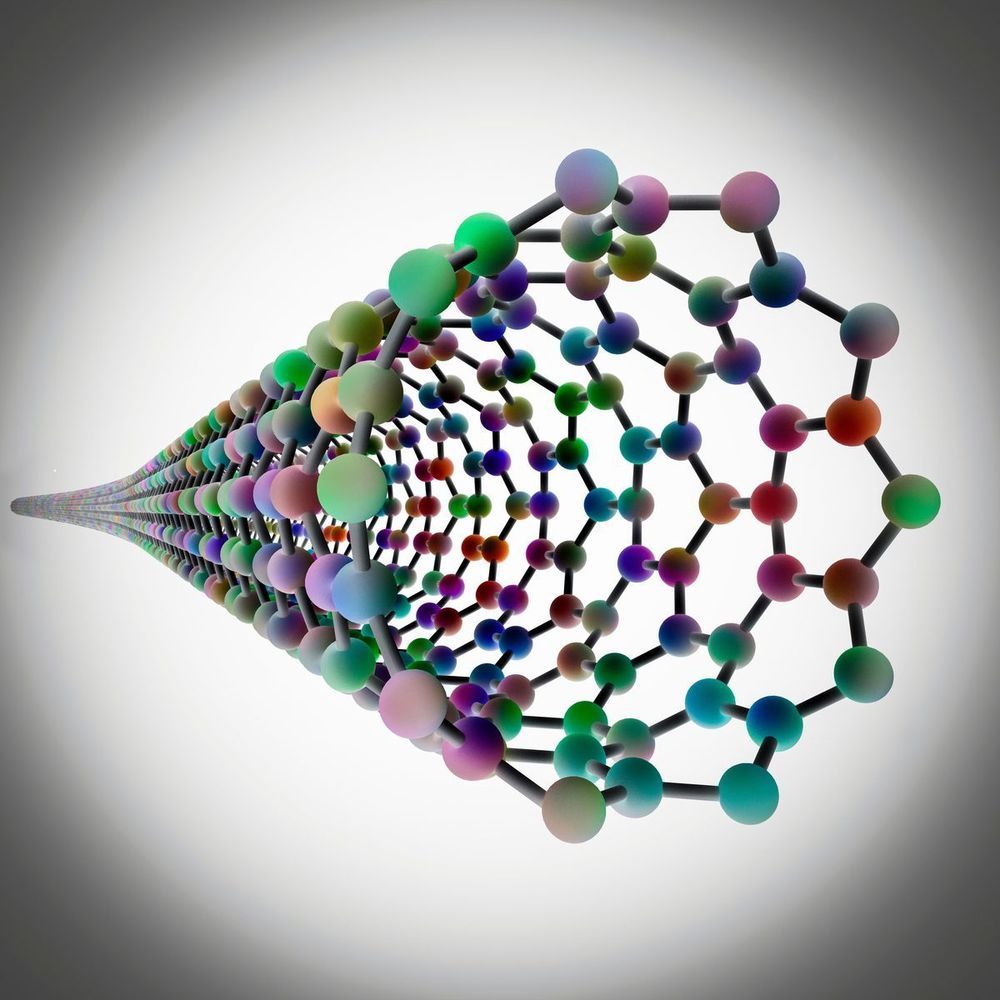Page 7501
Jun 1, 2020
Regulating the rise of Artificial General Intelligence
Posted by Mike Diverde in categories: governance, robotics/AI

If you are interested in artificial general intelligence (AGI), then I have a panel discussion to recommend. My friend, David Wood, has done a masterful job of selecting three panelists with deep insight into possible regulation of AGI. One of the panelists was my friend, Dan Faggella, who was eloquent and informative as usual. For this session of the London Futurists, David Wood selected two other panelists with significantly different opinions on how to properly restrain AGI.
As research around the world proceeds to improve the power, the scope, and the generality of AI systems, should developers adopt regulatory frameworks to help steer progress?
Continue reading “Regulating the rise of Artificial General Intelligence” »
Jun 1, 2020
Congo hit by a second, simultaneous Ebola outbreak
Posted by Quinn Sena in category: biotech/medical
KINSHASA (Reuters) — Authorities in Congo announced a new Ebola outbreak in the western city of Mbandaka on Monday, adding to another epidemic of the virus that has raged in the east since 2018.
Jun 1, 2020
How close can you get to a black hole?
Posted by Genevieve Klien in categories: cosmology, physics
Physicists are figuring out how close you can get to a black hole before you are unlikely to escape. That threshold is called the innermost stable circular orbit (ISCO).
Jun 1, 2020
Houston firm lands artificial intelligence deal with BP
Posted by Genevieve Klien in category: robotics/AI
Houston oil field software firm Bluware has landed an artificial intelligence deal with British oil major BP.
Photo: Marc Morrison / ST
Jun 1, 2020
Researchers Propose New Diamond Nanostructure For Efficient Energy Storage
Posted by Genevieve Klien in categories: chemistry, computing, cyborgs, nanotechnology, sustainability
One of the biggest challenges for renewable energy research is energy storage. The goal is to find a material with high energy storage capacity and energy storage material with high storage capacity that can also quickly and efficiently discharge a large amount of energy. In an attempt to overcome this hurdle, researchers at the Queensland University of Technology (QUT) have proposed a brand-new carbon nanostructure designed to store energy in mechanical form.
Most portable energy storage devices currently rely on storing energy in chemical form such as batteries, however this proposed new structure, made from a bundle of diamond nanothread (DNT) does not suffer from the same limiting properties as batteries, such as temperature sensitivity, or the potential to leak or explode. I have previously written about carbon nanotubes, and their applications in everything from Batman-like artificial muscle, to an analogy of the fictional element Vibranium, but a lot of research around carbon nanotubes is already focused on energy harvesting and energy storage applications.
What makes this energy storage method different is the method by which energy is stored, and also the related increased robustness of the resultant material. Dr Haifei Zhan and his team at the QUT Centre for material science used computer modelling to propose the structure of these ultra-thin one-dimensional carbon threads. The theory is that these threads should be able to store energy when they are twisted or stretched, similar to the way we store energy in wind-up toys. By turning the key, we force the spring inside into a tight coil. Once the key is released, the coil wishes to release the extra tension held within it and begins to unfurl. In doing so it transfers that mechanical energy into the movement of the toy’s wheels.
Jun 1, 2020
‘Black nitrogen’: Researchers discover new high-pressure material and solve a puzzle of the periodic table
Posted by Genevieve Klien in categories: chemistry, materials
In the periodic table of elements there is one golden rule for carbon, oxygen and other light elements: Under high pressures, they have similar structures to heavier elements in the same group of elements. But nitrogen always seemed unwilling to toe the line. However, high-pressure chemistry researchers of the University of Bayreuth have disproved this special status. Out of nitrogen, they created a crystalline structure which, under normal conditions, occurs in black phosphorus and arsenic. The structure contains two-dimensional atomic layers, and is therefore of great interest for high-tech electronics. The scientists have presented this “black nitrogen” in Physical Review Letters.
Nitrogen—an exception in the periodic system?
When you arrange the chemical elements in ascending order according to their number of protons and look at their properties, it soon becomes obvious that certain properties recur at large intervals (periods). The periodic table of elements brings these repetitions into focus. Elements with similar properties are placed one below the other in the same column, and thus form a group of elements. At the top of a column is the element that has the fewest protons and the lowest weight compared to the other group members. Nitrogen heads element group 15, but was previously considered the “black sheep” of the group. The reason: In earlier high-pressure experiments, nitrogen showed no structures similar to those exhibited under normal conditions by the heavier elements of this group—specifically, phosphorus, arsenic and antimony. Instead, such similarities are observed at high pressures in the neighboring groups headed by carbon and oxygen.
Jun 1, 2020
Nevada home to 246M-year-old fossil of pregnant ichthyosaur
Posted by Genevieve Klien in category: futurism
Autumn was closing in fast on northern Nevada when Martin Sander took one last look around the excavation site in the Augusta Mountains 150 miles (241 kilometers) east of Reno.
The longtime paleontologist from Germany had been working summers in Nevada for 20 years by that point and believed in the maxim that, “we find the spectacular things on the second to last day or last day.”
It was Oct. 3, 2011, and Sander and his team were nearing the end of a two-week expedition in an area that’s a hotspot for ichthyosaur fossils.
Jun 1, 2020
Eli Lilly and AbCellera Dose First Patients with COVID-19 Antibody in Phase I Study
Posted by Lon Anderson in category: biotech/medical
Eli Lilly and AbCellera dosed the first patients in a Phase I study of a potential antibody treatment for COVID-19. The two companies were able to get their antibody candidate into the clinic within two months of announcing their collaboration in response to the global pandemic.
The announcement was made a day after it was announced that more than 6 million people across the globe have been infected with the virus, including 1.79 million in the United States. COVID-19 has been responsible for the deaths of more than 372,000 people, with nearly one-third (104,383) in the U.S.
Patients were dosed with LY-CoV555, a neutralizing IgG1 monoclonal antibody (mAb) directed against the spike protein of SARS-CoV-2. It is designed to block viral attachment and entry into human cells, which should neutralize the virus, and potentially prevent and treat COVID-19. Because it’s an antibody derived from the blood of a recovered patient, Eli Lilly said LY-CoV555 is the first potential new medicine specifically designed to attack SARS-CoV-2, the virus that causes COVID-19.
European manufacturing company Ovako has announced the results of a full-scale trial using hydrogen to heat steel before rolling, which could slash the industry’s carbon emissions.

















